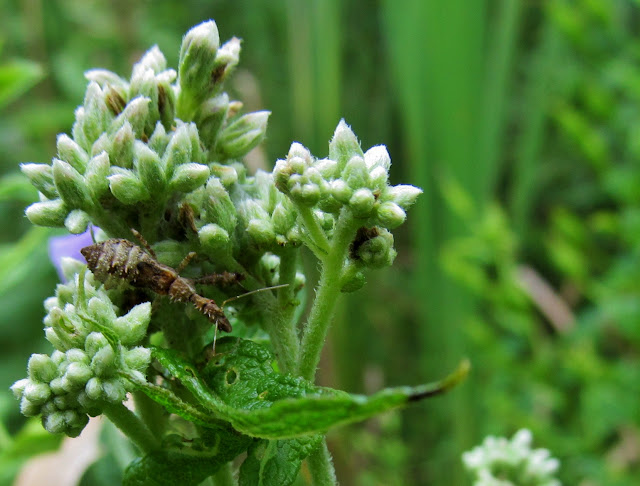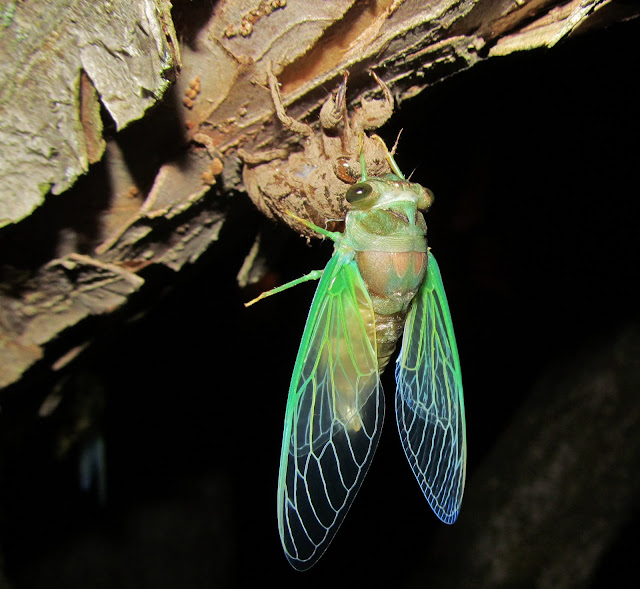Recap: Midwest Native Plants Conference 2012
This weekend was a complete rush for me. Finally, after an entire year of waiting, it was time to attend the 2012 Midwest Native Plants Conference. This conference brings together gardeners, naturalists, and scientists from all walks of life for three days to learn about the ecology of native plants and their effects on other wildlife, such as birds and insects. It's a magical time, full of interesting people and lots of knowledge jam packed into the Bergamo Center outside of Dayton, Ohio.
This year's speakers included: Cheryl Harner, who spoke about native plants as habitat; Ian Adams, who wowed us with beautiful pictures of dragonflies and damselflies; Marielle Anzelone, who taught us that there's a lot of botany to find in New York City, and the keynote speaker, David Wagner, the man who literally wrote the book on caterpillars. Not one session went by without multiple gasps of excitement from the crowd--these were top notch speakers. This isn't even mentioning the myriad of breakout sessions available, which covered topics from Pollinators by Jim McCormac to Conifers by David Brandenburg. The organizers behind this conference sure do know how to pick some engaging speakers.
Sitting in a room listening to some smart people speak is all well and good, but at some point, you've gotta get out into the field and search for the stuff the smart people are talking about. Thankfully, the conference featured multiple day trips and night hikes to satiate that need. A wonderful collection of insects were found on these trips, as the following photos show.
This year's speakers included: Cheryl Harner, who spoke about native plants as habitat; Ian Adams, who wowed us with beautiful pictures of dragonflies and damselflies; Marielle Anzelone, who taught us that there's a lot of botany to find in New York City, and the keynote speaker, David Wagner, the man who literally wrote the book on caterpillars. Not one session went by without multiple gasps of excitement from the crowd--these were top notch speakers. This isn't even mentioning the myriad of breakout sessions available, which covered topics from Pollinators by Jim McCormac to Conifers by David Brandenburg. The organizers behind this conference sure do know how to pick some engaging speakers.
Sitting in a room listening to some smart people speak is all well and good, but at some point, you've gotta get out into the field and search for the stuff the smart people are talking about. Thankfully, the conference featured multiple day trips and night hikes to satiate that need. A wonderful collection of insects were found on these trips, as the following photos show.
Jim McCormac talks about the singing insects to a group of 77 people: the biggest group of people ever had on the night hike!
David Wagner shows off a conehead katydid, careful to watch for its mandibles.
How could it be a successful hike without an assassin bug? This spiny assassin bug (Sinea sp.) was hiding on Eupatorium perfoliatum, also known as boneset.
This Delicate Cycnia (Cycnia tenera) was hiding on milkweed.
It's important to remain vigilant if you're an insect checking out Queen Anne's Lace: sometimes an ambush bug (Phymata sp.) will be waiting for you! They're masters of flower camouflage.
What discussion of camouflage would be complete without including the stick insects? These phasmids are a sight to behold, and you may be surprised at their size. This one isn't even fully grown.
I can't stress enough how beautiful it is to watch a cicada molt. This annual cicada (Tibicen sp.) is showing off its lovely wings--they really do have a blue hue to them immediately after molting.
What's great about being surrounded by experts is that they'll let you know when you come across something rare. So when we came upon a lemon beauty of a caterpillar, Jim stepped up and told us more about it.
On our first nature walk, we came across a patch of wild blue indigo, Baptisia australis, one of the host plants for the Genista broom moth caterpillar, Uresiphita reversalis. One plant was providing habitat for a dozen of these caterpillars, leading us to conclude that its bright yellow color was a warning to birds that it sequesters toxins. This moth is starting to make inroads into Ohio, as it moves northward. It's probable that this range expansion has been caused by climate change. This species is more southern in distribution, but with the warming north, new habitat has opened up for it. For a more in-depth report of this caterpillar, check out Jim's blog post here.
This is a small snippet of what was happening at the conference. Despite all I've talked about here, the conference really was about plants, not insects. It just happens to be my luck that the insects are so intimately linked to the plants. If you haven't made it out to the conference before, start planning to attend: next year is sure to be even better.










Comments
Post a Comment